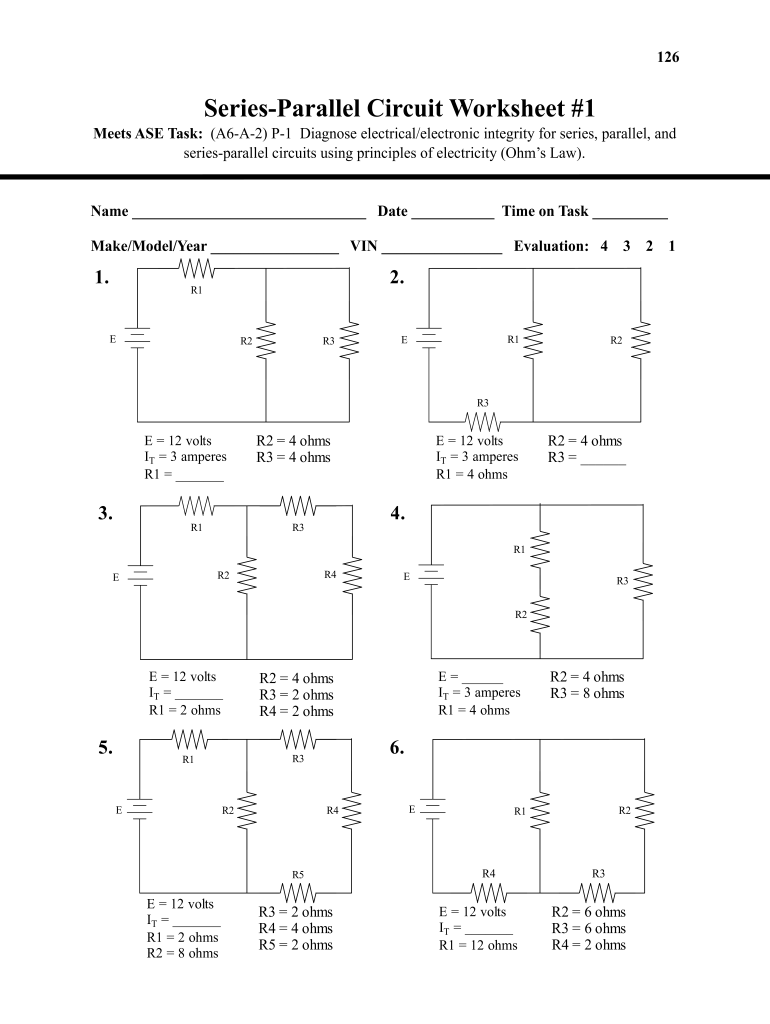In the world of electrical circuits, understanding the difference between series and parallel connections is crucial. Series circuits have components connected in a single path, while parallel circuits have components connected in multiple paths. Each type of circuit has its own unique characteristics and behaviors when it comes to voltage, current, and resistance.
When it comes to troubleshooting or designing electrical circuits, having a good grasp of series and parallel connections can make a big difference. A worksheet that focuses on these concepts can help reinforce your understanding and improve your skills in working with circuits.
Series and Parallel Circuits Worksheet
A series circuit is a circuit in which the components are connected in a single path. In a series circuit, the current remains the same throughout the circuit, but the voltage is divided among the components. This means that if one component fails, the entire circuit will be affected. On the other hand, a parallel circuit is a circuit in which the components are connected in multiple paths. In a parallel circuit, the voltage remains the same across all components, but the current is divided among the components. This means that if one component fails, the rest of the circuit will still function.
When working with series circuits, it is important to calculate the total resistance by adding up the individual resistances. In a parallel circuit, the total resistance is calculated differently, as the reciprocal of the total resistance is equal to the sum of the reciprocals of the individual resistances. Understanding how to calculate these values and how they affect the overall circuit performance is key to working with series and parallel circuits effectively.
Another important aspect of series and parallel circuits is understanding voltage and current distribution. In a series circuit, the voltage is divided among the components, while the current remains constant. In a parallel circuit, the voltage is the same across all components, but the current is divided based on the resistance of each component. Being able to analyze and predict how voltage and current behave in different circuit configurations is a valuable skill for any electrical engineer or technician.
By completing a series and parallel circuits worksheet, you can practice calculating total resistance, analyzing voltage and current distribution, and solving circuit problems. This hands-on experience will help reinforce your understanding of these concepts and improve your ability to work with electrical circuits in real-world applications.
In conclusion, understanding the differences between series and parallel circuits is essential for anyone working with electrical circuits. By completing a series and parallel circuits worksheet, you can strengthen your knowledge and skills in working with these circuit configurations. Whether you are a student learning about circuits for the first time or a professional looking to enhance your skills, a worksheet focused on series and parallel circuits can be a valuable tool for improving your understanding and proficiency in working with electrical circuits.
